Thingiverse
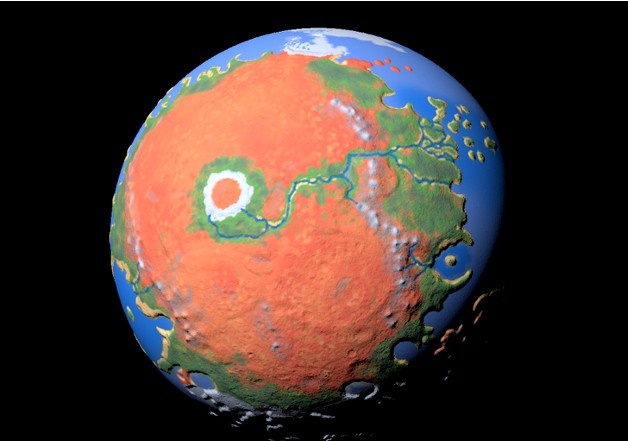
Red Moon scaled one in sixty million by tato_713
by Thingiverse
Last crawled date: 3 years ago
This is my interpretation of the Red Moon where it takes place Manifold: Origin, a hard science fiction novel full of gore, by Stephen Baxter. It has nothing to do with the real Earth's Moon1; in the book, it is a planetoid, a bit bigger than Mars, that suddenly appeared in the same place and orbit of the real counterpart, replacing it, and causing disasters on Earth after its huge tidal force. This post will be full of spoilers, so if you are planning to read the book, read it first.
I made this model using Ubuntu available tools, not because of having any advantage, but because I was forced to work on Linux at that time, so I challenged to myself to learn to use free-soft tools with this model. I used GIMP instead of Paint.net for drawing the topography; Octave instead of MATLAB for plotting the 3D model; MeshLab for simplifying the meshes, instead of Microsoft 3D Builder; Freecad2 instead of SolidWorks for the tunnel and the World Engine; and Blender for subtracting the tunnel and the chamber, and painting the outer surface, instead of 3D Builder or Paint 3D.Characteristics taken from the book
I took as much information as I could from the book, though I had to leave out some concepts that contradicts other, but the small details I had to make them up, as they are not as much detailed. I will list some of the features taken into account:
Its visible disc has five times as surface as Luna.3
It has one big continent mostly rounded as if the moon's center of mass was displaced from the geometric center.
There is a huge volcano at the center of the continent, nicknamed "Bullseye", surrounded by glaciers, and then, by vegetation. I made it twice as big as the real Olympus Mons.
From the Bullseye it is born a Nile like river that ends on the east coast.
The inland of the supercontinent is a rusted red, Mars like, dessert, with giant eroded craters. The vegetation is restricted to the coastlines. Two mountain beltways run along the east and west coasts.
There is a spherical chamber in the "very heart" of the moon. I made it displaced from the geometric center so that it can explain the displacement of the center of mass.
The chamber has something "blocky, obviously artificial," lurking within, that is the "World Engine". It is implied that this is huge but it does not occupy the whole chamber, but since the biggest scale I have made is something 13 cm in diameter, the space for something in the chamber is small (4 cm), so I decided to do like it is shown in one of the images. There is not a well detailed description of the engine in the book, so I made up a gyroscope-like stylised structure.
It is said that the entrance of the tunnel that leads to the chamber is placed in a small crater in the East coast, and that this crater is "diametrically opposite" to the Bullseye; however, this is not possible taking into account all the previous constrains, so I intentionally ignore this one.
Inhabitants of the Red Moon
From this point on, everything is a spoiler, so you are already warned. Many of the races listed behind are based on extinct pre-human species; they are not time-travelled hominines, but morphologically similar descendant of them, so they cannot be treated as the real species they are meant to be.
Runner folk. Homo erectus4. They are tall and thin, dark skinned, primitive face traits but recognisable as humans. They lore in groups of many, nomads, and they develops specific roles for each individual, making tools, starting fire, treating injuries, etc. When they have to do a group task they do it without any synchronisation, chaotically. They speak a few weakly connected English words.
Elf folk. Australopithecus sp.4. Short, dark furred like a chimp but standing strait when walking. Speculative pointing ears and a oddly human face. They are an aggressive folk, gregarious, tree dwelling, and they lack any fluid communication.
Nutcrackers. Another australopithecine5 species. Herbivorous, with a big belly and a tall sagital crest, similar to that of gorillas. The author was likely referring to the genus Paranthropus, which is not widely agreed to be a separated genus, and are dubbed as "robust australopithecines".
Hams. Homo neanderthalensis. They are stocky, heavy built, with pronounced eyebrows and short chin. They speak a rough English, lacking verbal times, like the typical cartoonish cavemen speak. They are named after biblical characters, and they said to came from a place they call the "Gray Earth"
English men. Homo sapiens. They are a few, old, male, Victorian Era English astronauts. They live in small towns and use other folks as servants.
Zealots. Homo sapiens. An ultra religious, Medieval Age civilisation (or just a town?). They use Hams as slaves, Runners as load animals, and they hunt australopithecines5 as food. It's not clear enough if all of them or just their leader have a tail.
Daemons. They are 3 m tall, knuckle walkers, fast moving, sapien australopithecines5, that evolved on an high O2 atmosphere. They are far more advanced than humans, and they developed magic-like technology called Mapping, that allows them to summon things and teleportation. They are tagged as Homo superior, they are not meant to represent any real animal, but it's possible that Baxter was winking at the problematic genus Meganthropus, though bigger.
Other species include: cats (presumably big felids), hyenas, bats, hunting ground birds (possibly phorusrhacids), deers, mouse deers, duikers, crocodyles, fish, glass shrimps, and an speculative aquatic hominid. The plants mentioned in the book are conifers, grass, brushes, pitcher plants, cloudberry plants and bananas.
Notes
Probably inspired by the Blood Moon Prophecy
A pain in the ... back.
The circular visible disk corresponding to a distant point of view: S = π r2
Homo erectus and some species of Australopithecus are most likelly to be chronospecies, that is, species that did not stand firmly on a separate clade, but some population of it, evolved into a new one; in this case, in more modern humans. So that, even late surviving individuals should not be considered the same species.
"Australopithecines" refers to the sub-tribe Australopithecina, which cladistically includes humans; but in the book, the term is used in a paraphyletic way, including Australopithecus grade hominids, but not the genus Homo.
References
Surf to STL function for MATLAB (Octave in this case)
I spend part of my time making these models, letting them available and free for everyone. If you want to support my work, you can contribute with me here:
Other astronomical objects
Object
Scale [1:x]
K = 103 (thousand)M = 106 (million)G = 109 (billion)
Image
Inner Solar System
Mercury
20M, 60M,
120M
Venus
60M,
120M,
250M
Earth
60M,
120M,
250M
Luna
10M, 20M,
60M
Mars
20M, 60M,
120M
Phobos and Deimos
200K,
500K
Artificial
Salyut 7
40, 48, 80, 160
Near Earth Asteroids
Moshup and Squannit
8K,
20K,
40K
Ra-Shalom
20K,
40K
Castalia
8K,
20K,
40K
Bacchus
8K,
20K
Bennu
3K,
8K
Ryugu
3K, 8K,
20K
Geographos
40K,
80K
Phaethon
40K,
80K
Itokawa
3K,
8K
Eros
80K, 200K,
500K
Nereus
3K,
8K
Mithra
20K,
40K
Golevka
8K
Toutatis
40K,
80K
Main Asteroid Belt
Gaspra
200K
Annefrank
40K,
80K
Braille
20K,
40K
Vesta
2M, 4M,
10M
Šteins
40K,
80K,
200K
Iris
2M,
4M
Hebe
1M,
2M,
4M
Lutetia
500K, 1M,
2M
Julia
1M,
2M,
4M
Mathilde
500K,
1M
Juno
2M,
4M
Ceres
4M,
10M
Pallas
4M,
10M
Kleopatra
2M,
4M
Ida
500K,
1M
Psyche
2M,
4M
Interamnia
2M,
4M
Hygiea
2M,
4M,
10M
Antiope
1M,
2M
Jovian System
Jupiter
500M, 1G
Amalthea
2M,
4M
Thebe
1M,
2M
Io
20M,
60M
Europa
20M,
60M
Ganymede
60M,
120M
Callisto
60M,
120M
Saturn System
Saturn
500M,
1G
Pan, Daphnis and Atlas
80K,
200K,
500K,
1M
Prometheus and Pandora
1M,
2M
Janus and Epimetheus
2M,
4M
Mimas
2M,
4M,
10M
Methone, Anthe and Pallene
40K,
80K
Enceladus
4M,
10M
Tethys
4M, 10M, 20M
Telesto and Calypso
200K,
500K
Dione
4M, 10M, 20M
Helene
500K,
1M
Rhea
10M,
20M
Titan
60M,
120M
Hyperion
2M,
4M
Iapetus
10M,
20M
Phoebe
1M, 2M,
4M
Uranian System
Uranus
250M,
500M,
1G
Puck
1M,
2M,
4M
Miranda
4M,
10M
Ariel
10M, 20M
Umbriel
10M, 20M
Titania
10M,
20M
Oberon
10M,
20M
Neptunian System
Neptune
250M,
500M,
1G
Larissa
2M,
4M
Proteus
2M,
4M,
10M
Triton
20M
Comets
Tempel 1
40K,
80K,
200K
Wild 2
40K,
80K
Churyumov-Gerasimenko
20K, 40K,
80K
Hartley 2
20K,
40K,
80K
Borrelly
40K,
80K,
200K
Halley
80K,
200K
Centaurs and TNOs
Hidalgo
500K, 1M
Chariklo
2M,
4M
Pluto and Charon
10M,
20M
Styx, Nix, Kerberos and Hydra
500K,
1M
Haumea, Namaka and Hiʻiaka
10M,
20M
Arrokoth
200K,
500K,
1M
Largest TNOs and their moons
10M,
20M
Extrasolar
Exoplanets
120M,
250M,
500M
Nearest white dwarfs
120M,
250M
HD 189733 b
1G
Pulsars
200K,
500K
Cygnus X-1 accretion disk
10M,
20M
Sky maps
Heliosphere
7.5*1013, 1.5*1014
Constellations
-
CMBR
2*1028
Ancient
Earth (540 Mya to 20 Mya)
60M,
120M,
250M
Luna (4 Gya)
20M,
60M
Speculative
Planet Nine
250M,
500M
Cube planet
60M,
120M,
250M
Science Fiction
Ghroth
4M,
10M
Arda
60M,
120M
B612
10, 20, 32, 40
Mesklin
500M,
1G
Arrakis
60M,
120M
Borg cube
8K, 20K,
40K
Pern
60M,
120M
Europa Monolith
200K,
500K
Leonora Christine
500, 600, 1K, 3K
Rama
80K, 200K, 500K
Death Star
500K, 1M, 2M
Starkiller Base
2M, 4M,
10M
Nirn, Secunda and Masser
20M,
60M,
120M
Independence Day mothership
2M,
4M,
10M
Arrival heptapod spaceship
1K,
3K,
8K
Gaijin flowership
3K
Red Moon
60M,
120M
Halo Array
4M,
10M, 20M, 60M
Gem Homeworld
120M, 250M, 500M
The Skeld
40, 80, 160, 350, 500
Misc
Mars (1962 reconstruction)
60M,
120M
Flat Earth
250M
Expanding Earth
60M, 120M
Spaceship of Ezekiel
80, 160
I made this model using Ubuntu available tools, not because of having any advantage, but because I was forced to work on Linux at that time, so I challenged to myself to learn to use free-soft tools with this model. I used GIMP instead of Paint.net for drawing the topography; Octave instead of MATLAB for plotting the 3D model; MeshLab for simplifying the meshes, instead of Microsoft 3D Builder; Freecad2 instead of SolidWorks for the tunnel and the World Engine; and Blender for subtracting the tunnel and the chamber, and painting the outer surface, instead of 3D Builder or Paint 3D.Characteristics taken from the book
I took as much information as I could from the book, though I had to leave out some concepts that contradicts other, but the small details I had to make them up, as they are not as much detailed. I will list some of the features taken into account:
Its visible disc has five times as surface as Luna.3
It has one big continent mostly rounded as if the moon's center of mass was displaced from the geometric center.
There is a huge volcano at the center of the continent, nicknamed "Bullseye", surrounded by glaciers, and then, by vegetation. I made it twice as big as the real Olympus Mons.
From the Bullseye it is born a Nile like river that ends on the east coast.
The inland of the supercontinent is a rusted red, Mars like, dessert, with giant eroded craters. The vegetation is restricted to the coastlines. Two mountain beltways run along the east and west coasts.
There is a spherical chamber in the "very heart" of the moon. I made it displaced from the geometric center so that it can explain the displacement of the center of mass.
The chamber has something "blocky, obviously artificial," lurking within, that is the "World Engine". It is implied that this is huge but it does not occupy the whole chamber, but since the biggest scale I have made is something 13 cm in diameter, the space for something in the chamber is small (4 cm), so I decided to do like it is shown in one of the images. There is not a well detailed description of the engine in the book, so I made up a gyroscope-like stylised structure.
It is said that the entrance of the tunnel that leads to the chamber is placed in a small crater in the East coast, and that this crater is "diametrically opposite" to the Bullseye; however, this is not possible taking into account all the previous constrains, so I intentionally ignore this one.
Inhabitants of the Red Moon
From this point on, everything is a spoiler, so you are already warned. Many of the races listed behind are based on extinct pre-human species; they are not time-travelled hominines, but morphologically similar descendant of them, so they cannot be treated as the real species they are meant to be.
Runner folk. Homo erectus4. They are tall and thin, dark skinned, primitive face traits but recognisable as humans. They lore in groups of many, nomads, and they develops specific roles for each individual, making tools, starting fire, treating injuries, etc. When they have to do a group task they do it without any synchronisation, chaotically. They speak a few weakly connected English words.
Elf folk. Australopithecus sp.4. Short, dark furred like a chimp but standing strait when walking. Speculative pointing ears and a oddly human face. They are an aggressive folk, gregarious, tree dwelling, and they lack any fluid communication.
Nutcrackers. Another australopithecine5 species. Herbivorous, with a big belly and a tall sagital crest, similar to that of gorillas. The author was likely referring to the genus Paranthropus, which is not widely agreed to be a separated genus, and are dubbed as "robust australopithecines".
Hams. Homo neanderthalensis. They are stocky, heavy built, with pronounced eyebrows and short chin. They speak a rough English, lacking verbal times, like the typical cartoonish cavemen speak. They are named after biblical characters, and they said to came from a place they call the "Gray Earth"
English men. Homo sapiens. They are a few, old, male, Victorian Era English astronauts. They live in small towns and use other folks as servants.
Zealots. Homo sapiens. An ultra religious, Medieval Age civilisation (or just a town?). They use Hams as slaves, Runners as load animals, and they hunt australopithecines5 as food. It's not clear enough if all of them or just their leader have a tail.
Daemons. They are 3 m tall, knuckle walkers, fast moving, sapien australopithecines5, that evolved on an high O2 atmosphere. They are far more advanced than humans, and they developed magic-like technology called Mapping, that allows them to summon things and teleportation. They are tagged as Homo superior, they are not meant to represent any real animal, but it's possible that Baxter was winking at the problematic genus Meganthropus, though bigger.
Other species include: cats (presumably big felids), hyenas, bats, hunting ground birds (possibly phorusrhacids), deers, mouse deers, duikers, crocodyles, fish, glass shrimps, and an speculative aquatic hominid. The plants mentioned in the book are conifers, grass, brushes, pitcher plants, cloudberry plants and bananas.
Notes
Probably inspired by the Blood Moon Prophecy
A pain in the ... back.
The circular visible disk corresponding to a distant point of view: S = π r2
Homo erectus and some species of Australopithecus are most likelly to be chronospecies, that is, species that did not stand firmly on a separate clade, but some population of it, evolved into a new one; in this case, in more modern humans. So that, even late surviving individuals should not be considered the same species.
"Australopithecines" refers to the sub-tribe Australopithecina, which cladistically includes humans; but in the book, the term is used in a paraphyletic way, including Australopithecus grade hominids, but not the genus Homo.
References
Surf to STL function for MATLAB (Octave in this case)
I spend part of my time making these models, letting them available and free for everyone. If you want to support my work, you can contribute with me here:
Other astronomical objects
Object
Scale [1:x]
K = 103 (thousand)M = 106 (million)G = 109 (billion)
Image
Inner Solar System
Mercury
20M, 60M,
120M
Venus
60M,
120M,
250M
Earth
60M,
120M,
250M
Luna
10M, 20M,
60M
Mars
20M, 60M,
120M
Phobos and Deimos
200K,
500K
Artificial
Salyut 7
40, 48, 80, 160
Near Earth Asteroids
Moshup and Squannit
8K,
20K,
40K
Ra-Shalom
20K,
40K
Castalia
8K,
20K,
40K
Bacchus
8K,
20K
Bennu
3K,
8K
Ryugu
3K, 8K,
20K
Geographos
40K,
80K
Phaethon
40K,
80K
Itokawa
3K,
8K
Eros
80K, 200K,
500K
Nereus
3K,
8K
Mithra
20K,
40K
Golevka
8K
Toutatis
40K,
80K
Main Asteroid Belt
Gaspra
200K
Annefrank
40K,
80K
Braille
20K,
40K
Vesta
2M, 4M,
10M
Šteins
40K,
80K,
200K
Iris
2M,
4M
Hebe
1M,
2M,
4M
Lutetia
500K, 1M,
2M
Julia
1M,
2M,
4M
Mathilde
500K,
1M
Juno
2M,
4M
Ceres
4M,
10M
Pallas
4M,
10M
Kleopatra
2M,
4M
Ida
500K,
1M
Psyche
2M,
4M
Interamnia
2M,
4M
Hygiea
2M,
4M,
10M
Antiope
1M,
2M
Jovian System
Jupiter
500M, 1G
Amalthea
2M,
4M
Thebe
1M,
2M
Io
20M,
60M
Europa
20M,
60M
Ganymede
60M,
120M
Callisto
60M,
120M
Saturn System
Saturn
500M,
1G
Pan, Daphnis and Atlas
80K,
200K,
500K,
1M
Prometheus and Pandora
1M,
2M
Janus and Epimetheus
2M,
4M
Mimas
2M,
4M,
10M
Methone, Anthe and Pallene
40K,
80K
Enceladus
4M,
10M
Tethys
4M, 10M, 20M
Telesto and Calypso
200K,
500K
Dione
4M, 10M, 20M
Helene
500K,
1M
Rhea
10M,
20M
Titan
60M,
120M
Hyperion
2M,
4M
Iapetus
10M,
20M
Phoebe
1M, 2M,
4M
Uranian System
Uranus
250M,
500M,
1G
Puck
1M,
2M,
4M
Miranda
4M,
10M
Ariel
10M, 20M
Umbriel
10M, 20M
Titania
10M,
20M
Oberon
10M,
20M
Neptunian System
Neptune
250M,
500M,
1G
Larissa
2M,
4M
Proteus
2M,
4M,
10M
Triton
20M
Comets
Tempel 1
40K,
80K,
200K
Wild 2
40K,
80K
Churyumov-Gerasimenko
20K, 40K,
80K
Hartley 2
20K,
40K,
80K
Borrelly
40K,
80K,
200K
Halley
80K,
200K
Centaurs and TNOs
Hidalgo
500K, 1M
Chariklo
2M,
4M
Pluto and Charon
10M,
20M
Styx, Nix, Kerberos and Hydra
500K,
1M
Haumea, Namaka and Hiʻiaka
10M,
20M
Arrokoth
200K,
500K,
1M
Largest TNOs and their moons
10M,
20M
Extrasolar
Exoplanets
120M,
250M,
500M
Nearest white dwarfs
120M,
250M
HD 189733 b
1G
Pulsars
200K,
500K
Cygnus X-1 accretion disk
10M,
20M
Sky maps
Heliosphere
7.5*1013, 1.5*1014
Constellations
-
CMBR
2*1028
Ancient
Earth (540 Mya to 20 Mya)
60M,
120M,
250M
Luna (4 Gya)
20M,
60M
Speculative
Planet Nine
250M,
500M
Cube planet
60M,
120M,
250M
Science Fiction
Ghroth
4M,
10M
Arda
60M,
120M
B612
10, 20, 32, 40
Mesklin
500M,
1G
Arrakis
60M,
120M
Borg cube
8K, 20K,
40K
Pern
60M,
120M
Europa Monolith
200K,
500K
Leonora Christine
500, 600, 1K, 3K
Rama
80K, 200K, 500K
Death Star
500K, 1M, 2M
Starkiller Base
2M, 4M,
10M
Nirn, Secunda and Masser
20M,
60M,
120M
Independence Day mothership
2M,
4M,
10M
Arrival heptapod spaceship
1K,
3K,
8K
Gaijin flowership
3K
Red Moon
60M,
120M
Halo Array
4M,
10M, 20M, 60M
Gem Homeworld
120M, 250M, 500M
The Skeld
40, 80, 160, 350, 500
Misc
Mars (1962 reconstruction)
60M,
120M
Flat Earth
250M
Expanding Earth
60M, 120M
Spaceship of Ezekiel
80, 160
Similar models
thingiverse
free

Wheel of Time Earth scaled one in sixty million by tato_713
...
flat earth
250m
expanding earth
60m, 120m
spaceship of ezekiel
80, 160
thingiverse
free

Visitors mothership scaled one in forty by tato_713
...
flat earth
250m
expanding earth
60m, 120m
spaceship of ezekiel
80, 160
thingiverse
free

4660 Nereus scaled one in eight thousand by tato_713
...
flat earth
250m
expanding earth
60m, 120m
spaceship of ezekiel
80, 160
thingiverse
free
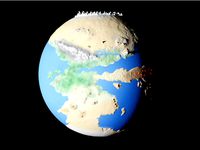
Eternia scaled one in sixty million by tato_713
...
flat earth
250m
expanding earth
60m, 120m
spaceship of ezekiel
80, 160
thingiverse
free

Citadel of Ricks scaled one in 200 thousand by tato_713
...it in the same scale with a city with similar population density, in which the landscapes of the citadel...
thingiverse
free

Gaijin flowership scaled one in three thousand by tato_713
...
flat earth
250m
expanding earth
60m, 120m
spaceship of ezekiel
80, 160
thingiverse
free
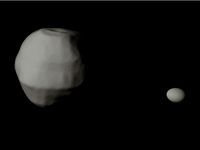
65803 Didymos and Dimorphos scaled one in eight thousand by tato_713
...
flat earth
250m
expanding earth
60m, 120m
spaceship of ezekiel
80, 160
thingiverse
free

HD 189733 A b heat map scaled one in one billion by tato_713
...reconstruction)
60m,
120m
flat earth
250m
expanding earth
60m, 120m
thingiverse
free

M87* photon ring scaled one in 1.5*10^15 by tato_713
...contrast, super masive black holes can have a density similar or even lower than water. this is because the...
thingiverse
free

Spaceship of Ezekiel scaled one in 160 by tato_713
...
flat earth
250m
expanding earth
60m, 120m
spaceship of ezekiel
80, 160
Tato
3ddd
$1

Tato 01, IL Loft
... om
стул tato 01 от итальянской компании il loft, размер: 700x500x840
источник: www.illoft.com
материалы в комплекте.
turbosquid
$8

TATO JIL TABLE LAMP
...l table lamp for download as jpg, 3ds, max, dxf, obj, and fbx on turbosquid: 3d models for games, architecture, videos. (1489908)
design_connected
$11

Biba Table Lamp
...biba table lamp designconnected tato italia biba table lamp computer generated 3d model. designed...
design_connected
$11

Jil Table Light
...jil table light designconnected tato italia jil table light computer generated 3d model. designed...
3d_sky
free

Tato 01, IL Loft
...1, il loft
3dsky
chair of the italian company of tato 01 il loft, size: 700x500x840 source: www.illoft.com
materials in the kit.
3dbaza
$3

Tato PIEDI REGOLABILI TABLE BY IGNAZIO GARDELLA (123600)
...tato piedi regolabili table by ignazio gardella (123600)
3dbaza
tato piedi regolabili by ignazio gardella table 3d model
thingiverse
free

Tato Cube 3 / Cube3 Extruder Original Hobbed & 608 Bearing by mdorignac
...ruder original hobbed & 608 bearing by mdorignac
thingiverse
tato cube 3 / cube3 extruder original hobbed & 608 bearing
thingiverse
free

Couch Phone-tato by mmarcoux98
... ability.
finally do let me know of other compatible phones and phones you would like a couch phone-tato for.
thanks and enjoy!
3dbaza
$3

Wallie Chandelier by Lorenza Bozzoli for Tato (137297)
... 928<br>xform: no<br>box trick: no<br>model parts: 2<br>render: v-ray<br>formats: 3ds max 2014, obj
3dbaza
$3

Anita Table Lamp by Lorenza Bozzoli for Tato (137153)
... 960<br>xform: no<br>box trick: no<br>model parts: 2<br>render: v-ray<br>formats: 3ds max 2014, obj
713
design_connected
$11

713
...713
designconnected
cassina 713 coffee tables computer generated 3d model. designed by theodore waddell.
turbosquid
free

glider PH-713
... available on turbo squid, the world's leading provider of digital 3d models for visualization, films, television, and games.
3ddd
free

Italamp fashion lighting 713
...13
3ddd
italamp , fashion
люстра - italamp fashion lighting 713
размеры - d60 см, h29 см
3ddd
$1

N-Light 713-03-52AC Antique Copper/713-03-12CH Polished Nickel
...ch polished nickel
3ddd
подвес
подвес в корабельном стиле
713-03-52ac antique copper n-light
713-03-12ch polished nickel n-light
3ddd
$1

tisserant as-713
...ch's , tisserant
3ds max 2014
3ds max 2011
fbx
obj
textures
materials
real size
3d_export
$60

Architecture 713 3D Model
...lege campus max street landscape commercial building medical hospital offices
architecture 713 3d model lotusmodel 49098 3dexport
3d_export
$150

3d building 713 3D Model
...erior vray sitting accesorie apartment home visualization sofa couch table chair
3d building 713 3d model kanhtart 46553 3dexport
3ddd
$1

NLight 713-03-52AC
...light , подвес
потолочная чаша - с шарниром.
внизу плафона - матовое рассеивающее стекло
3d_export
$50

3D Home 713 3D Model
... chair furniture texture table lamp apartment rug carpet restaurant hotel sitting
3d home 713 3d model richard3015 46995 3dexport
humster3d
$40

3D model of Acer Iconia Tab 7 (A1-713)
...d 3d model of acer iconia tab 7 (a1-713) in various file formats. all our 3d models were created maximally close to the original.
Sixty
3d_ocean
$5
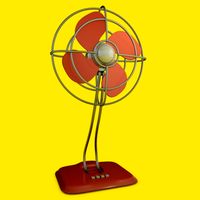
Sixties Fan
...sixties fan
3docean
classic fan furniture interiors old school sixties vintage
a home fan from the sixties.
3ddd
$1

sixties lamp
...sixties lamp
3ddd
дизайнер максим максимов настольный светильник sixties lamp
3ddd
$1

avmazzega - sixty
...m/eng/prodotti_scheda.html?s=&c;=moderni&t;=&f;=sixty&l;=&p;=&r;=1&i;=46&if;=sixty&mc;=ap1083
3ddd
$1
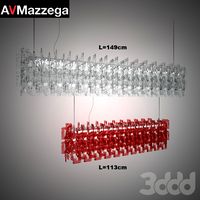
avmazzega - sixty
...m/eng/prodotti_scheda.html?s=&c;=moderni&t;=&f;=sixty&l;=&p;=&r;=1&i;=50&if;=sixty&mc;=so3126
turbosquid
$18

Armchair Sixties
... available on turbo squid, the world's leading provider of digital 3d models for visualization, films, television, and games.
turbosquid
$2

TV Sixties
... model tv sixties for download as c4d, 3ds, dxf, fbx, and obj on turbosquid: 3d models for games, architecture, videos. (1578990)
turbosquid
free

Lamp Sixties
... available on turbo squid, the world's leading provider of digital 3d models for visualization, films, television, and games.
3ddd
free
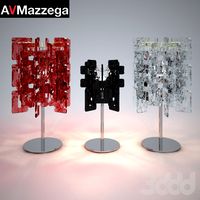
avmazzega - sixty
...m/eng/prodotti_scheda.html?s=&c;=moderni&t;=&f;=sixty&l;=&p;=&r;=1&i;=57&if;=sixty&mc;=ta4067
3ddd
$1

Hoff Sixties
...
производитель hoff
габариты:
глубина - 64 см.
ширина - 69 см.
высота - 78 см.
в файле два исполнения цвета.
полигонов: 87956
3ddd
free
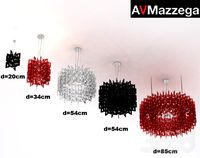
avmazzega - sixty
...m/eng/prodotti_scheda.html?s=&c;=moderni&t;=&f;=sixty&l;=&p;=&r;=1&i;=50&if;=sixty&mc;=so3126
Million
turbosquid
$1

Ceratosaurus from one million years BC (1966)
...tosaurus from one million years bc (1966) for download as max on turbosquid: 3d models for games, architecture, videos. (1221538)
turbosquid
free

Triceratops from one million years BC (1966)
...ceratops from one million years bc (1966) for download as max on turbosquid: 3d models for games, architecture, videos. (1190627)
turbosquid
$99

ANTELOPE SKULL FOSSIL (50 Million Years Old)
... available on turbo squid, the world's leading provider of digital 3d models for visualization, films, television, and games.
3d_export
$5
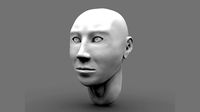
bust
...bust 3dexport total point 5.649 million subdivision levels: 6 simple export from ztl...
3d_export
$5

head detalized
...head detalized 3dexport total point 9.788 million subdivision levels: 6 simple export from ztl...
3d_export
$5

creature head hipoly
...creature head hipoly 3dexport total point 13.459 million subdivision levels: 6 simple export from ztl...
3d_ocean
$5

Money Stacks
...bills cash cinema 4d dollars economy hundreds lottery million million money paper pile prize realistic stack thousands included: single...
3d_export
$5

hand detalized
...hand detalized 3dexport total point 3.263 million subdivision levels: 6 simple export from ztl file simple...
3d_export
$5

devil horns
...devil horns 3dexport total point 7.821 million subdivision levels: 6 simple export from ztl file simple...
3d_export
$5

ufo sculpture
...sculpture 3dexport this model is high poly has 5 million polygons. each person represents a ufo in his own...
Moon
3d_export
$10
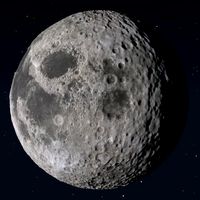
moon
...moon
3dexport
relief moon
3ddd
$1

Moon
...moon
3ddd
moon armchair
3ddd
$1

MOON 012
...moon 012
3ddd
moon
moon 012
3ddd
$1

Moon 026
...moon 026
3ddd
moon
диван moon 026
design_connected
$13

Moon
...moon
designconnected
davide groppi moon computer generated 3d model. designed by groppi, davide.
3ddd
$1

Moroso moon
...moroso moon
3ddd
moroso , moon
кресло moroso moon
3ddd
$1

MOON 016
...moon 016
3ddd
moon , угловой
диван moon 016
3ddd
$1

MOON 053
...moon 053
3ddd
moon , угловой
диван moon 053
3d_ocean
$7
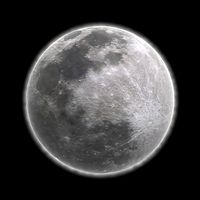
MOON
...rth jupiter model moon nasa nature ocean photorealistic planet poly realistic render satellite science solar space system
3d moon
3ddd
$1

Диван Moon
...диван moon
3ddd
moon , модульный
диван для гостиной. moon
Red
3ddd
$1

red bull
...red bull
3ddd
red bull
red bull can
3d_ocean
$4
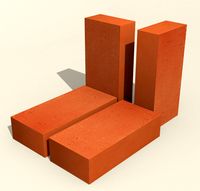
Red brick
...red brick
3docean
brick low poly red
red brick
3d_export
$40

red panda
...red panda
3dexport
red panda
3d_export
$5

eggchair red
...eggchair red
3dexport
a red eggchair
3ddd
$1

Red curtain
...red curtain
3ddd
red curtain
3d_export
$5

Red barrel
...red barrel
3dexport
its a red barrel
3ddd
$1

Red bicycle
...red bicycle
3ddd
велосипед
red bicycle
3ddd
$1

RED COLLECTION
...red collection
3ddd
витрина
red collection
3ddd
$1

RED COLLECTION
...red collection
3ddd
обеденный
red collection
3ddd
$1

RED COLLECTION
...red collection
3ddd
витрина
red collection
Scaled
turbosquid
$20
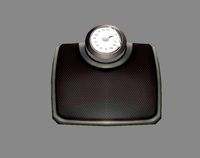
Weight scale or Bathroom Scale
...ght scale or bathroom scale for download as max, fbx, and obj on turbosquid: 3d models for games, architecture, videos. (1664576)
turbosquid
$19

Scale
...e
turbosquid
royalty free 3d model scale for download as fbx on turbosquid: 3d models for games, architecture, videos. (1411722)
turbosquid
$5

Scales
...s
turbosquid
royalty free 3d model scales for download as ma on turbosquid: 3d models for games, architecture, videos. (1393439)
turbosquid
$40

Scale
... available on turbo squid, the world's leading provider of digital 3d models for visualization, films, television, and games.
turbosquid
$12

Scale
... available on turbo squid, the world's leading provider of digital 3d models for visualization, films, television, and games.
turbosquid
free

Scale
... available on turbo squid, the world's leading provider of digital 3d models for visualization, films, television, and games.
3d_export
$7
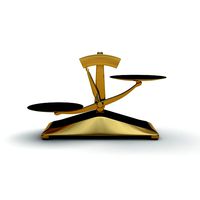
of scales
...s have a flat point of support. the samples are rendered in the standard cinema 4d renderer. enjoy your use and creative success.
3d_export
$5
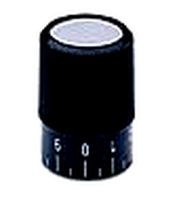
scale knob
...scale knob
3dexport
scale knob
3d_export
$20

cartoon weight scale or bathroom scale
...cartoon weight scale or bathroom scale
3dexport
texture size:512px number of texture:1 texture format: png
3d_ocean
$4

Bathroom scale
... the model is ready to import and render in all formats. it comes with a .tif diffuse texture. for other cool stuff check out ...
One
turbosquid
$2
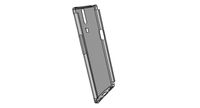
one plus one
... available on turbo squid, the world's leading provider of digital 3d models for visualization, films, television, and games.
3ddd
$1

One
...one
3ddd
стул
офисный стул one
3ddd
free

one
...
palazetti one ,http://palazzetti.ca/index.php/component/virtuemart/seating/armchairs-lounges/one-chair-detail?itemid=0
turbosquid
$35

One A
... available on turbo squid, the world's leading provider of digital 3d models for visualization, films, television, and games.
turbosquid
free
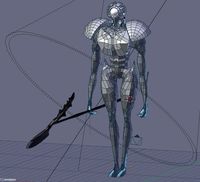
One
... available on turbo squid, the world's leading provider of digital 3d models for visualization, films, television, and games.
3ddd
$1

Стул One
...стул one
3ddd
one , magis
кресло magis s.p.a , one
3ddd
$1
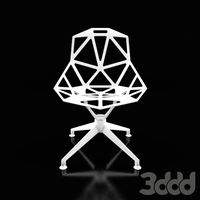
Стул One
...стул one
3ddd
one , magis
кресло one chair (4star), magis s.p.a.
3d_export
$20

xbox one
...xbox one
3dexport
xbox one
3ddd
$1

xbox one
... консоль , джойстик
xbox one + kinect + gamepad
3ddd
free
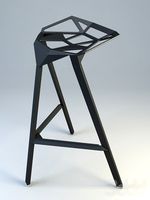
One
...nstantin grcic
артикул ct-284 (cosmorelax.ru)
размер l36xw41xh82.5, sh 77cm
цвет черный, красный
материал алюминий
вес 2,5 кг
